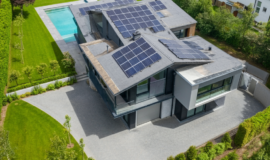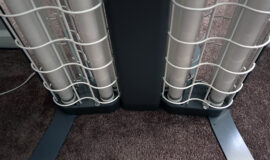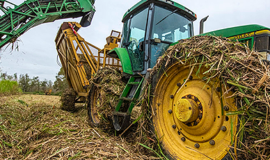Оffshore Wind Turbines – Wind Energy on Water
Offshore wind farms are wind farms that are located on water and at least ten kilometres away from land. Offshore winds tend to have a higher speed than the ones on land and with that more energy can be produced from offshore wind farms. That is why they peaked the interest in developers that work with wind energy.
One of the tricky parts with offshore wind turbines is that in order to be maintained, they must be constructed in such a way as to enable maintenance boats to be towed and transport personnel. Turbine maintenance personnel may also need access by helicopter. Whether maintenance crews arrive by sea or air, offshore turbines must have an access for maintenance. It is also practical to build a “main platform”, similar to oil and gas platforms, next to the offshore wind farm that would house a substation and provide space for staff to operate and maintain wind farms.
Even though the maintenance of these turbines is tricky, they come with a lot of advantages.
Some of the advantages of these types of wind turbines include:
– Offshore wind speeds are greater than onshore, which means an increase in energy generation – faster offshore wind speeds means that more energy can be produced
– Offshore wind speeds are steadier than onshore wind speeds which means a more stable source of energy
– There are less obstacles that can block the wind – there are no buildings, no trees, no hills and other kinds of objects
– No noise impact – one of the biggest disadvantages of wind turbines is that the noise they make can have a negative impact when located near residential areas. Since offshore wind farms are located far away from land, the noise pollution doesn’t cause distress to anyone
Offshore wind turbines also come with certain disadvantages:
– Building these wind turbines can result in high investment and maintenance costs
– They have a certain effect on marine life and birds which is not yet fully understood
– Water is a much more unstable environment than land which can sometime result in shortened turbine life and a greater need for servicing. Additionally, the water becomes more unstable and hostile the farther you go for installing a wind turbine and so increasing the need for maintenance.
Even though onshore wind farms are more acceptable as a solution for wind energy, investments for offshore wind farms are increasing.
The largest wind farm on water is Hornsea 1, located on English waters 120 kilometres from the mainland and covers and area of 407 m2. The wind farm has an installed capacity of 1,218 GW and consists of 174 wind turbines. Each wind turbine has an installed capacity of 7 MW and a height of 190 metres. Other known offshore wind farms are: East Anglia ONE (with an installed capacity of 714 MW), Walney Extension (659 MW), Gemini Wind Farm (600 MW), Gode Wind (582 MW) and others.
The installation and maintenance of offshore wind turbines might be expensive today but it is one of the most promising solutions for the future of the wind market.





